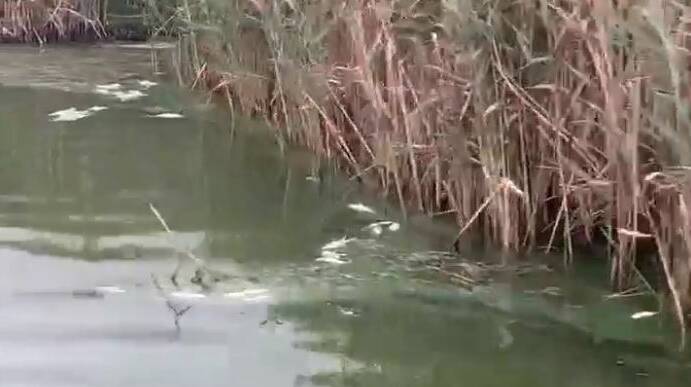
Thousands of fish have died in the Curdies River in the Peterborough Coastal Reserve after a toxic algal bloom combined with deteriorating water quality.
Subscribe now for unlimited access.
or signup to continue reading
A Department of Environment, Water, Land and Planning spokesperson described the tonnes of dead fish as a small kill and warned residents to avoid the waterway until significant rainfall or cooler conditions slowed the growth of the bloom.
The Corangamite Catchment Management Authority shares responsibility for the river with DELWP and a spokesperson told The Standard water quality was a contributing factor in blue-green algae blooms and the incident was currently a matter for the Victorian Environmental Protection Authority.
But an EPA spokesperson said the organisation considered the fish kill a natural occurrence and it wouldn't be investigating.
Paaratte commercial eel fisherman Zac Taylor, who filmed the extent of the kill, said run-off from fertiliser on surrounding farmland had contributed to a particularly bad bloom this year.
"It's a big problem," Mr Taylor said.
"It's at least the third year in a row it's been this bad off the back of good rainfall years.
"It's from too much fertiliser and too many nutrients and a lack of oxygen from a blue-green algae bloom."
While blooms have appeared in the river previously, Heytesbury District Landcare Network coordinator Geoff Rollinson said the current kill had been exacerbated by other factors.
"I went down to the lower end of the estuary and what I saw was over and above the normal blue-green algae," Mr Rollinson said.
"There was obvious evidence of cow excrement in the water. There are quite a few sections of the Curdies River where cow stock have got access to it.
"The other giveaway that verified it was the number of blowflies on the material that was sitting on the surface."
IN OTHER NEWS
He said the fish deaths were likely a combination of cow excrement and the algal bloom.
"Around the jetty area there was methane bubbling away, it's quite possible that the jetty structure allowed the accumulation of methane that had come downstream," he said.
"In other watercourses in that area there have been deliberate releases of cow excrement from effluent dams. What they do is bulldoze the side of the dam and release the effluent into the river.
"It's in a state where it's basically liquid excrement. That's been lodged with the Environmental Protection Authority through the Corangamite Catchment Management Authority."
Mr Rollinson said he believed legislative mandates could be the solution.
"Some farmers have been really good with revegetating the riverbanks along their properties, but the pace has been far too slow to improve the river condition," he said.
"I think we're very close to the stage where the waterways are in such poor condition that the government will have to step in."
Now just one tap with our new app: Digital subscribers now have the convenience of faster news, right at your fingertips with The Standard:
Our journalists work hard to provide local, up-to-date news to the community. This is how you can access our trusted content:
- Bookmark https://www.standard.net.au/
- Make sure you are signed up for our breaking and regular headlines and newsletters
- Follow us on Facebook, Twitter, Instagram and LinkedIn
- Tap here to open our Google News page.
- Join our Courts and Crime Facebook group and our dedicated Sport Facebook group
- Subscribe
















